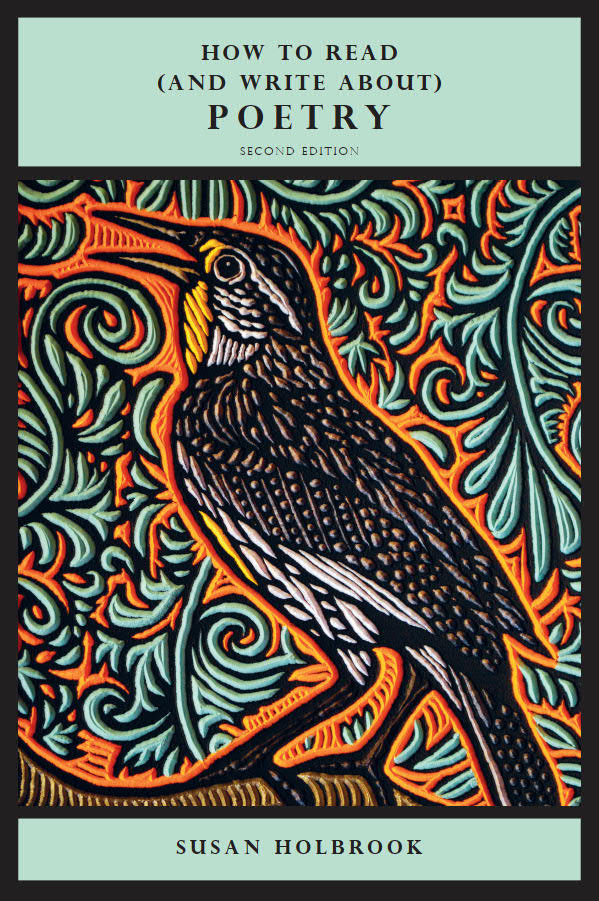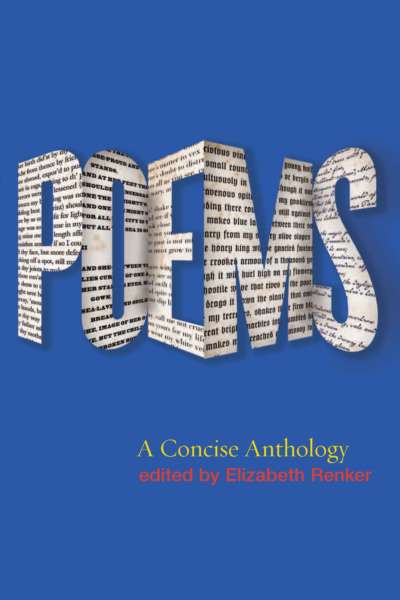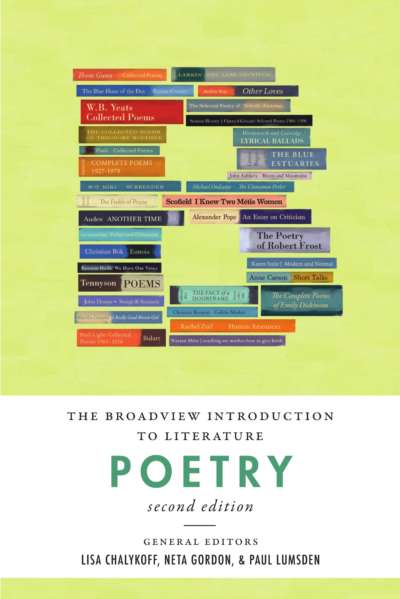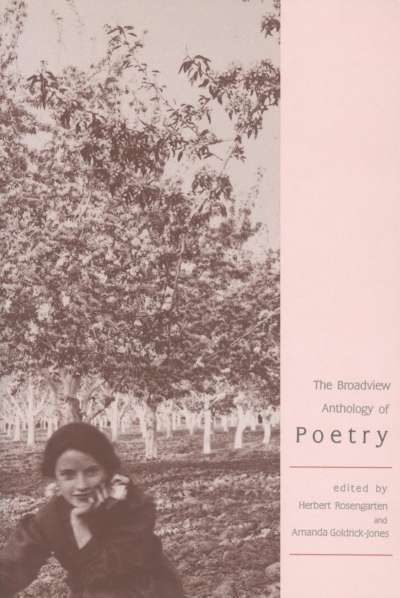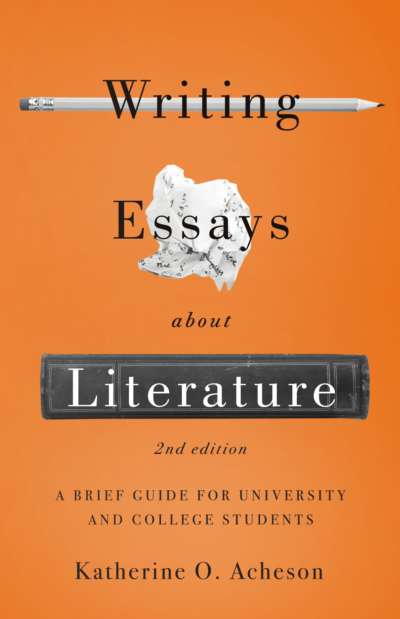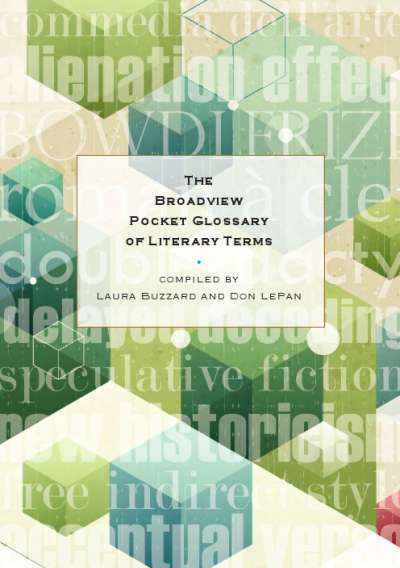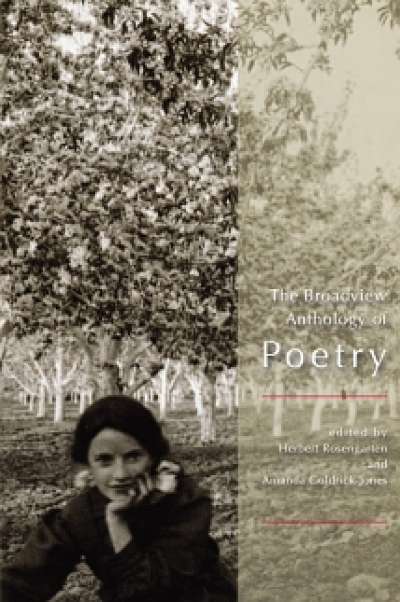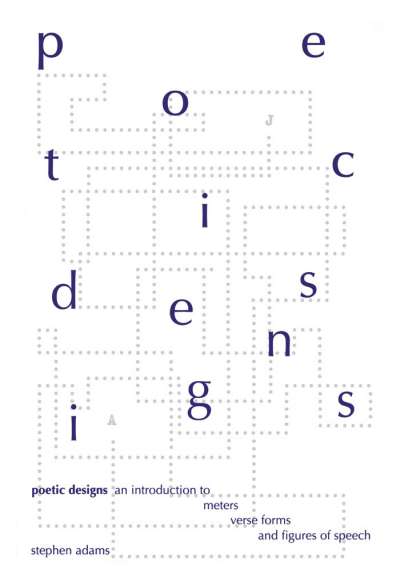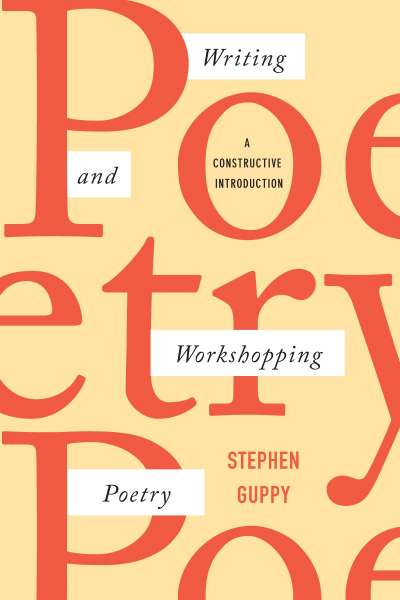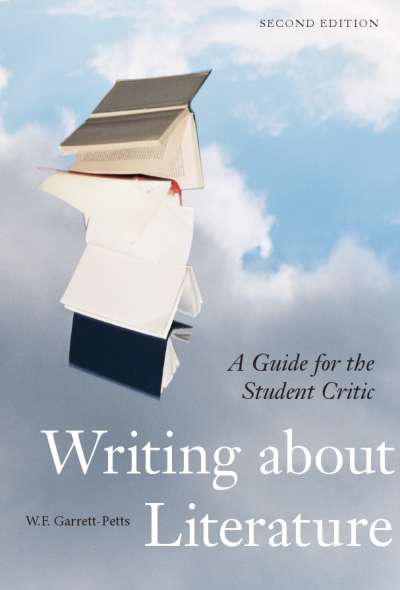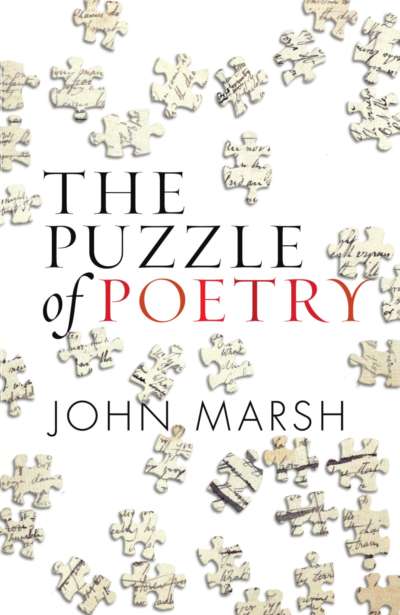How to Read (and Write About) Poetry invites students and others curious about poetry to join the critical conversation about a genre many find a little mystifying, even intimidating. In an accessible, engaging manner, this book introduces the productive questions, reading strategies, literary terms, and secondary research tips that will empower readers to participate in literary analysis. Holbrook explicates a number of poems, initiating readers into critical discourse while highlighting key poetic terms. The explications are followed by selections of related works, so the book thus offers what amounts to a brief anthology, ideal for a poetry unit or introductory class on poetry and poetics. A chapter on meter illuminates the rhythmic dimension of poetry and guides readers through methods of scansion.
The second edition is updated throughout and includes a fresh selection of poems and the latest MLA citation guidance.
Comments
“Students need textbooks like this, to show them the range of poetry’s pleasures and to guide them toward becoming better readers and writers. But educators need them too, to provide models for how to present our artform with all the rigour it deserves while still making room for questions, affection, and wit. Susan Holbrook is a wonderful teacher—contemporary, diverse in her tastes, wearing her erudition lightly, and pointing out pathways rather than giving directions. I won’t be the only reader who is grateful to have learned from her.” — Adam Sol, Victoria College, University of Toronto
“How to Read (and Write About) Poetry is a consummate guide to the rich, nuanced field of poetry. For nervous novitiates, it demystifies the artform and provides an array of practical points of access. Holbrook is a wonderful, welcoming guide. For more comfortable poetry readers, pedagogues, and poets, this book presents a skilful demonstration of how to talk about poetic language without killing it. Indeed, this is no exegesis as exhumation herein: you will find no dust upon the carefully curated poems chosen from across the field. With language itself as the loamy soil, you can almost feel her bringing the poems alive, until they pulse with life and mystery as she guides readers through their lush wildness.” — Gregory Betts, Brock University
“In this approachable and compelling collection, Susan Holbrook gathers together traditional sonnets and irascible ones, the choicest concrete texts and resounding poems for the ear, the well-wrought urns, and a veritable playground of repetition, apostrophe, enjambment, and metonymy.” — Nicole Markotić, University of Windsor
Acknowledgements
How to Use This Book
Introduction: What Makes Poetry Poetry and Why Are We So Afraid of It?
Poem Discussion One: Sonnet 130, by William Shakespeare
- More Sonnets by William Shakespeare
- Sonnet 18
- Sonnet 20
- Sonnet 73
- Sonnet 116
Poem Discussion Two: Harlem Dancer, by Claude McKay
- More Poems by Writers of the Harlem Renaissance
- The Castaways, Claude McKay
- Tableau, Countee Cullen
- The Weary Blues, Langston Hughes
- Letter to My Sister, Anne Spencer
- A Mona Lisa, Angelina Weld Grimké
Poem Discussion Three: I, Being Born a Woman and Distressed, by Edna St. Vincent Millay
- More Modern and Contemporary Sonnets
- Poetics Against the Angel of Death, Phyllis Webb
- Nothing in That Drawer, Ron Padgett
- Sonnet 15, Alice Notley
- So’net 1, Paul Dutton
- Sonnet for Bonnie, Darren Wershler-Henry
- Dim Lady, Harryette Mullen
- LXXIII, Sonnet L’Abbé
Poem Discussion Four: The Dance, by William Carlos Williams
- More Ekphrastic Poems
- Young Sycamore, William Carlos Williams
- Venus Transiens, Amy Lowell
- Preciosilla, Gertrude Stein
- Why I Am Not a Painter, Frank O’Hara
- The Starry Night, Anne Sexton
- from Pictograms from the Interior of B.C., Fred Wah
- Granite Weaving, Valerie Martínez
Poem Discussion Five: Ode on a Grecian Urn, by John Keats
- More Odes, Apostrophes, Addresses
- To Night, Charlotte Smith
- A Supermarket in California, Allen Ginsberg
- July Man, Margaret Avison
- To My Twenties, Kenneth Koch
- Late One Night, Margaret Christakos
- Winnipeg, you’re so pretty, Molly Cross-Blanchard
Poem Discussion Six: The Tyger, by William Blake
- More Poems about Animals
- The Lamb, William Blake
- The Flea, John Donne
- A narrow Fellow in the Grass, Emily Dickinson
- A DOG, Gertrude Stein
- The Shark, E.J. Pratt
- Bird-Witted, Marianne Moore
- THE ARK, Nasser Hussain
Poem Discussion Seven: r-p-o-p-h-e-s-s-a-g-r, by E.E. Cummings
- More Concrete Poems
- Easter Wings, George Herbert
- l(a, E.E. Cummings
- Forsythia, Mary Ellen Solt
- Cycle No. 22, bp Nichol
- In Medias Res, Michael McFee
- Love Song, Margaret Christakos
- Flattening spirits joining grey tiles groutly, Sachiko Murakami
- Find Hope, Simina Banu
Poem Discussion Eight: Daddy, by Sylvia Plath
- More Poems “for the ear”
- Jabberwocky, Lewis Carroll
- God’s Grandeur, Gerard Manley Hopkins
- The Cat and the Saxophone (2 A.M.), Langston Hughes
- at the cemetery, walnut grove plantation, south carolina, 1989, Lucille Clifton
- Blah-Blah, Harryette Mullen
- Zong! #1, M. NourbeSe Philip
- Ravine, Louis Cabri
Poem Discussion Nine: kitchenette building, by Gwendolyn Brooks
- More Poems Displaying the Poetic Force of Syntax
- When I Heard the Learn’d Astronomer, Walt Whitman
- In a Station of the Metro, Ezra Pound
- ASPARAGUS, Gertrude Stein
- since feeling is first, E.E. Cummings
- Rolling Motion, Erin Moure
- monday, Lisa Robertson
- Winter, Mark Truscott
- AMERICAN SONNET FOR MY PAST AND FUTURE ASSASSIN, Terrance Hayes
Poem Discussion Ten: The Three Emilys, by Dorothy Livesay
- More Feminist Poems
- Prologue, Anne Bradstreet
- In an Artist’s Studio, Christina Rossetti
- Sheltered Garden, H.D. (Hilda Doolittle)
- Blues Spiritual for Mammy Prater, Dionne Brand
- Body Politics, Louise Bernice Halfe
- I Wish I Had More Sisters, Brenda Shaughnessy
A Brief Guide to Meter
How to Write about Poetry
Glossary of Poetic Terms
Works Cited
Permissions Acknowledgements
Index
Susan Holbrook is a poet, a critic, and Professor of Literature and Creative Writing at the University of Windsor.

